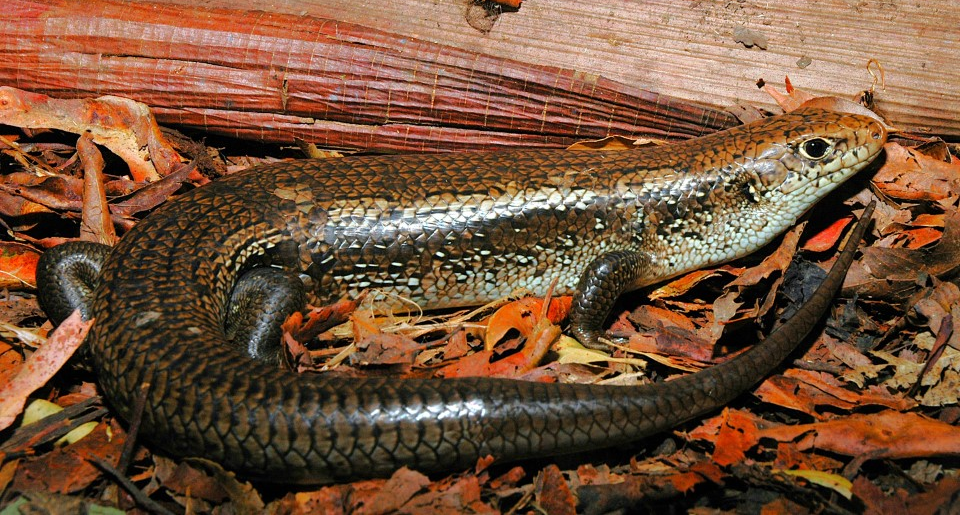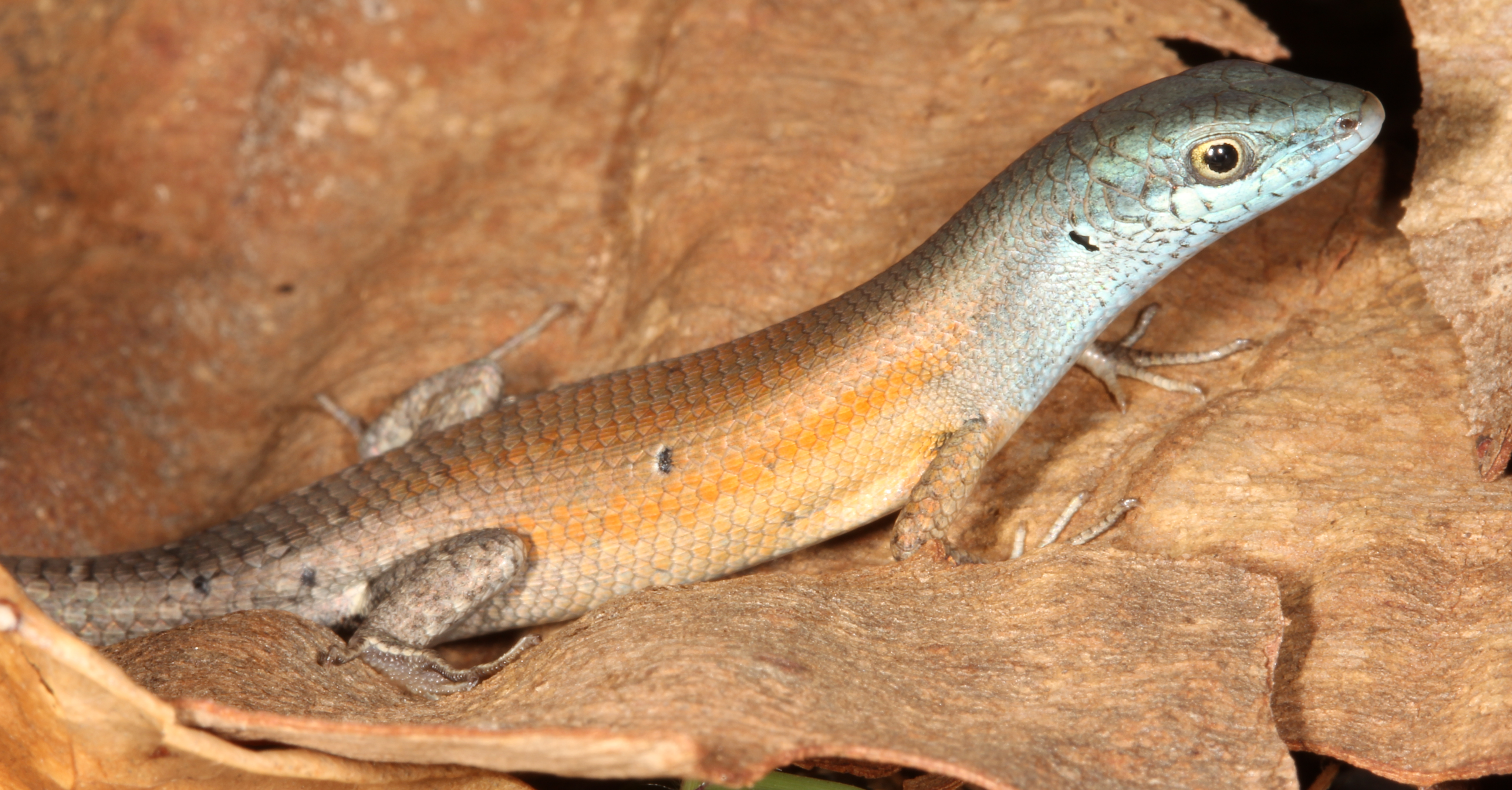A study of Australia’s many species of skink reveals they have evolved resistance to snake venom at least 25 times, a testimony to the continent’s dangers. Since each skink lineage had to evolve resistance from scratch through mutation, not all of them got the most effective protection, but some came back for a second round.
Twenty-four million years ago, Australia was skink paradise, until something catastrophic happened: Elapidae snakes arrived. The poor skinks were “Behaviorally and chemically naïve,” Professor Bryan Fry of the University of Queensland told IFLScience. Many species may have gone extinct. Others survived by getting better at running and hiding from their new tormentors.
However, in a study of hundreds of surviving skinks, Fry and colleagues found that 27.5 percent had “elements of resistance” to the alpha neurotoxin that is the most powerful part of these snakes’ venom. The venom targets the nicotinic acetylcholine receptor, which, Fry said in a statement, “Is normally the target of neurotoxins which bind to it and block nerve-muscle communication, causing rapid paralysis and death.”
Skink defenses did not arise through one fortunate mutation, with the offspring of the lucky individual going on to conquer the continent. Instead, Fry’s team found evidence of mutations conferring some level of resistance having appeared at least 25 times. That probably has more to do with the sheer number of skinks that have been born since the Elapidae’s arrival than an indication that the mutation is particularly likely.
These mutations produce positive charged amino acids that interfere with the positive charge crucial to venom’s binding and make it less deadly.

Don’t mess with me, Mr snake, I’m as immune as possible.
Image Credit: Scott Eipper
Venom-blocking mutations have occurred at multiple sites in the genome, helping Fry and colleagues see these do not all originate from the same event. Some of these work better than others. Fry describes some skinks as “having won the genetic lottery,” with an arginine (R) substitution at position 187.
“We confirmed with our functional testing that Australia’s Major Skink (Bellatorias frerei) has evolved exactly the same resistance mutation that gives the honey badger its famous resistance to cobra venom,” Fry said. “To see this same type of resistance evolve in a lizard and a mammal is quite remarkable – evolution keeps hitting the same molecular bullseye.”
Perhaps a greater endorsement is that it’s the mutation that the snakes themselves evolved to resist their own venom, whether administered in battle with a rival or because snakes can be clumsy too.
“It’s fascinating to think that one tiny change in a protein can mean the difference between life and death when facing a highly venomous predator,” said first author Dr Uthpala Chandrasekara.
Mutations at other locations are less powerful, but will still mean some skinks survive bites and pass on the characteristic to their offspring. Some of these then acquired a second mutation elsewhere, and Fry says sometimes “one plus one is three” with two only slightly protective mutations adding up to more than the sum of their parts.

The orange-flanked rainbow skink, like other members of the genus Carlia, inherited immunity against venom, but two spots along the genome from the most effective location.
Image Credit: Conrad Hoskin
Even mutations at one site have sometimes occurred independently. Fry noted some skinks sporting the same mutation are not closely related, and it’s unlikely a common ancestor developed it, before being lost in some descendants and not others.
This has created what the authors call a “Mosaic of resistant lineages,” which, they add, “Could partly explain the success and abundance of certain skink lineages in Australia’s harsh, predator-rich environments.”
Snakes have not taken this resistance lying down. Ok, they did, but they evolved other venoms while doing it. “These mutations only block the toxin that binds to one part of the receptor,” Fry told IFLScience. “So there’s pressure to evolve elsewhere on the receptor, or elsewhere in the prey’s physiology. This is one of the reasons Australian snake venom is so complex compared to what we see elsewhere.”
Although that complexity makes venom hard to fight when humans get bitten, alpha neurotoxins remain the biggest problem in most snakebite cases. Although we already have the examples of animals much closer to us to look to, Fry told IFLScience, “The receptors and functions are very conserved across the animal kingdom, so anything that teaches us how these receptors work helps us design anti-venoms.” Fry noted that today the race is on to identify critical sites for antivenom design, rather than relying on traditional antibodies.
The study is open access in the International Journal of Molecular Sciences.
Source Link: Australian Skinks Have Evolved Snake Venom Resistance 25 Times (Give Them A Break, Snakes)